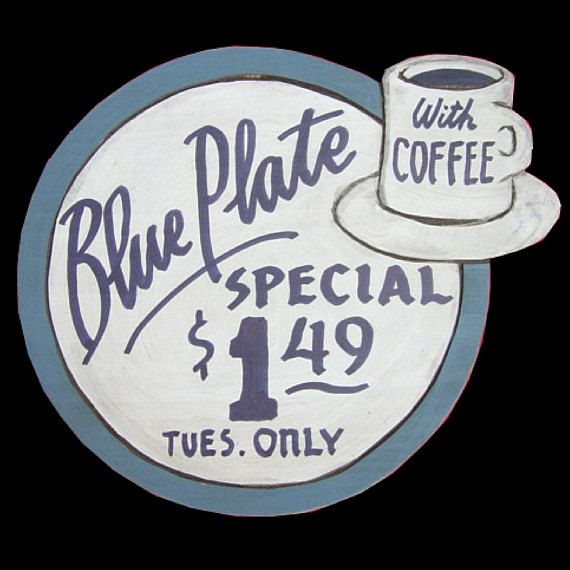Rick Marty said:
OK, a completely ignorant question here.
How does this vinyl cutting thing work? does the machine do it all or is there a bunch of computer programing involved??
Thanks for any enlightenment
Pretty much what Dan said. My Silhouette cutter works only with their custom Silhouette Studio software. It’s a typical drawing program able to create the usual line, shape and text type objects. You can start from a blank page or paste any graphic you like. But, pasting from a jpeg won’t give you cut lines - for those you use the software’s “trace” tool to find edges in the jpeg and convert them to cut lines.
As an example, the building in my first photo above has a window sign “Blue Plate Special.” I did this starting from an internet downloaded jpeg:

Before pasting it into Silhouette, I used a drawing program to get rid of those faint red lines around the blue plate and at the top of the coffee cup, which would be a problem for the Silhouette Trace Tool. Then I pasted it into the software, used the trace tool to find edges. Basically the outline of every letter became an edge, etc. Lots of manual fiddling followed, plus resizing the image to fit its destination window.
When you are ready to send a design to the cutter, you choose which lines of the design should be cut; which ones ignored. This is handy when you are doing multiple colors - in my case, I cut white vinyl for the outline of the design and then blue vinyl for everything else. I could have used two different shades of blue as in the original jpeg, but didn’t.
To complete the cutting process, select the type of material (my default is adhesive-backed vinyl) and hit Send. First turn on the cutter and load a sheet of Vinyl. The cutter automatically adjusts the cut depth for the type of material and proceeds to cut at a reasonable pace. Remove the vinyl from the cutter, weed the unwanted parts, transfer the top color to the bottom color (careful, gotta match exactly), then transfer to the destination object, in my case a window.
Silhouette also provides an extensive online library of crowd-sourced downloadable graphics ($). These have the advantage of sensible cut lines included. Perhaps 99% of the available graphics are, well, female/family oriented subjects, often frilly or cartoonish. Almost none are train-related. Still, I have used graphics for a golfer (for our golf resort) and an ice-cream cone (for a scoop shop) with good results.















